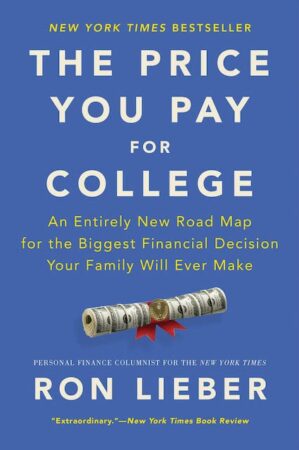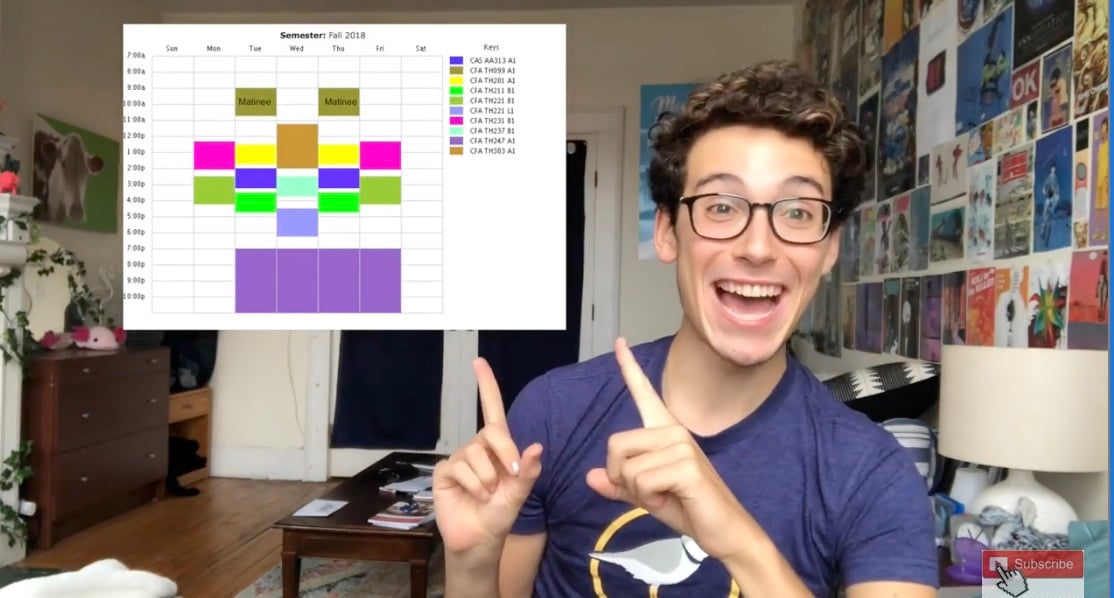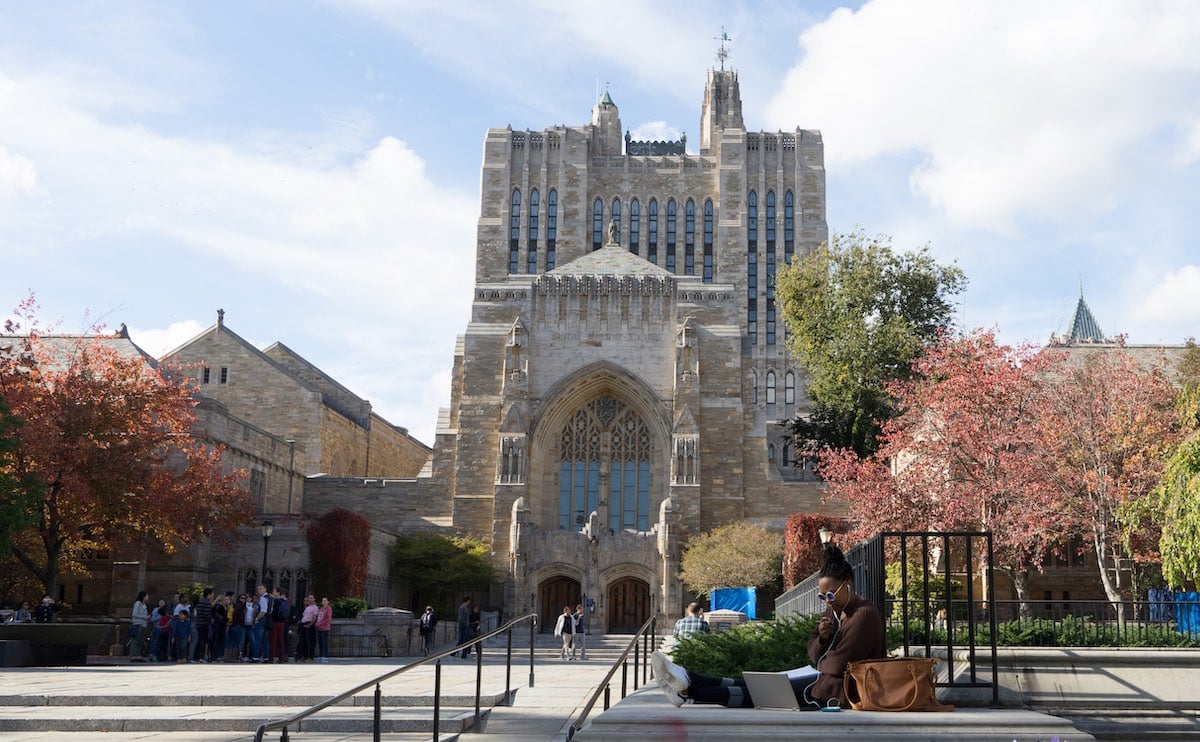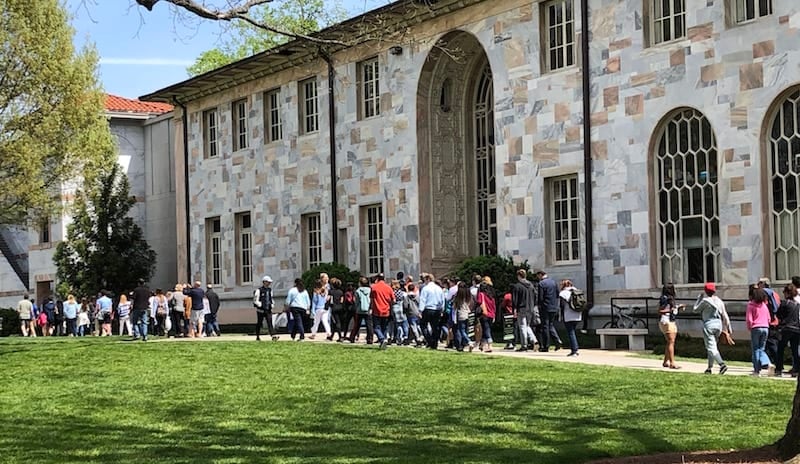I’m curious for a living. When I began work on The Price You Pay for College: An Entirely New Road Map for the Biggest Financial Decision Your Family Will Ever Make, I turned my inquisitiveness to higher education.
I wasn’t just curious on my behalf. I also wanted to know what others were wondering. So as I toured dozens of schools over several years, I also tried to pay attention to what parents and high school students were asking. I wrote them down when their questions felt new, penetrating, and valid.
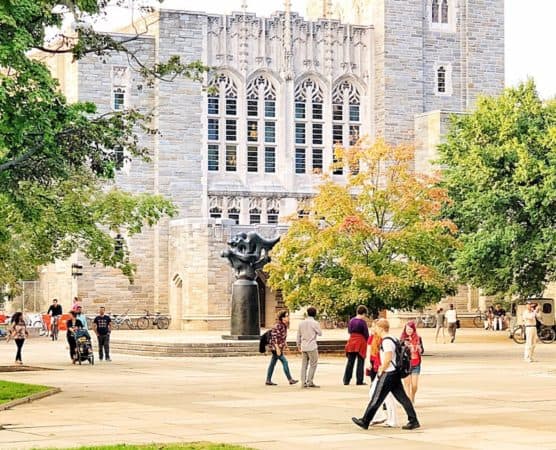
When it came time to assemble my book, I returned to that list of questions. And at the end of nearly every chapter, I tried to leave readers with a list of things to ask about, from mental health and career counseling centers to just how much colleges may be spying on our 16-year-olds as they visit the websites for admissions offices.
What follows is my list of favorite questions when shopping for undergraduate education. Here we go.
In the Classroom
1) What are you looking for in a college education?
Let’s start with one that you should ask yourself.
Most families haven’t stopped to think hard about what it is they’re shopping for. The interviewees usually seek an education, kinship from friends and mentors, and credentials. But you may not be looking for all those things—or one may be much more important than the others. If so, talk about it and ask others — and see if you agree.
2) What percentage of the instructors, including lab sections, will be taught by people who are not tenured or tenure-track?
We’re probing for undistracted teachers who will be around for a while. Adjuncts and grad students may be fabulous teachers. But adjuncts are distracted by all the hustling they must do to scare up additional work and wages, while grad students have their theses and job hunts to worry about.
And both types of instructors may not be on campus for the four years your child will. Given what the research tells us about the importance of mentorship, it’s wise to seek out schools with teachers who stand a good chance of actually being there the entire time.
3) What percentage of classroom time do students spend in classes with over 100 people, especially in their first two years?
Student-faculty ratios don’t tell you much at universities where professors brag about never dealing with undergraduates. (You know that some of them do this when the customers are out of earshot, right? The contempt for teenagers in some parts of academia is…not negligible.)
An average class size data is helpful but not wholly telling either, since smaller ones tend to be upper-level courses — long after you may have ditched a major because you hated its extra-large intro classes. So ask about this generally — and ask about it with department heads in subjects you are interested in, too.
4) What percentage of the new students declaring STEM majors or interest in them are women — and what percentage of actual majors are? And of the women who express interest or a major, what percentage of them change to something else during their undergraduate years?
It can still be much harder to be a young woman in a classroom than it is to be a man, especially in the STEM fields. Ask whatever version of the question you’d like, and if your daughter is interested in science, run away quickly if anyone at the school looks at you blankly when you inquire — your son, too, for that matter.
5) If you have an honors program or college, what percentage of the people who begin complete it? What percentage of the people in them at any given moment are people of color, and what percentage of those who finish are?
You can probably sense where these answers tend to trend. If the completion rate is 25 percent and the school has an honors-so-white issue, ask why — and what it is doing about it.
Paying for Four Years
6) Will you briefly talk with me before I apply to estimate how much merit aid I might get if I use early or make a regular decision?
At some schools, like Wabash and Lake Forest Colleges and many public universities, there’s a clear grid or a list, so there is no mystery. At others, however, the criteria go entirely unexplained.
Thankfully, the College of Wooster and Whitman now do a merit-aid pre-read. You submit your information before even applying for admission, and you’ll get a quick sense of what they might be able to offer.
7) Does your net price calculator predict merit aid? If not, why not?
Related to the above — and the unpredictability of merit aid — if a school’s net price calculator does not gather academic information to offer a merit aid estimate, why not?
8) Why don’t you post your common data set?
The common data set, which gathers all sorts of juicy details about a school in one place, so the institution can pass it on to U.S. News and other ranking entities, is especially useful for people seeking merit aid. Section H2A is where a school explains how much money it hands out to more affluent families who have no demonstrated need (but may be unable to pay full price, at least in their own opinion).
Why would schools hide this? Go ahead and ask them, please. Tell them Ron Lieber sent you.
9) Are you tracking how often I visit your website and how quickly I open my email?
Ask the admissions officers about this during a group information session. Don’t worry; they don’t bite. They may merely be seeking demonstration of interest, which they consider as part of your application. But I’d also ask this as a follow-up — are there any circumstances under which you would offer me less merit aid due to my seeming too eager to hear from your institution?
10) What percentage of students here receive Pell Grants?
If you need one, you’ll want to know how many other people like you will be on campus. Also, is there an affinity group for low-income students?
If you won’t need one, this is a proxy for a school’s commitment to people with the fewest financial resources. Check out this list of schools with the lowest percentage of students who get a Pell, compiled by the journalist James Murphy for a group called Education Reform Now. Many are pretty rich. Something is not right here.
Living the College Life
11) What percentage of students graduate without having dinner at a faculty member’s home or out to dinner with a professor and their class?
Again, mentorship. How will you spend time with adults who can make a difference in your life? And how much do they want to spend time with students? One piece of research out of Hamilton College proved what an enormous difference even one meal can mean to students that the school started reimbursing faculty for groceries when they host students.
12) Do you let new students pair off in the admitted students’ Facebook group and become roommates their first year, or do you assign roommates institutionally?
There are varying schools of thought on which approach is “best” to avoid midyear breakups and be sensitive to living styles, diversity, and other issues. The right answer may differ by school. But here’s what’s wrong: When a college can’t explain why it does what it does — and has no data to back up its philosophy.
13) Who are your three closest friends here, and how did you find them?
What you’re probing for here is a sense of how communities form. Where do people find their people? How do the living communities where undergraduates dwell impact this?
14) What forms of speech or protest, if any, have been unwelcome here?
This is fun since if you put it precisely this way, it puts the respondent in the position of guessing why you’re asking.
15) How atomized is the student population, and how does it break down? And if it’s more than zero, what are students and administrators doing to change that?
Living and learning in a diverse environment has enormous value. It has less value if people don’t interact all that much.
16) When have you been most uncomfortable here?
Again, an open-ended question. Be gentle with this one — you cannot know what kind of trauma even asking might trigger. Maybe save it until the end of a tour and a one-on-one opening, but try it out if you sense one with a like-minded soul.
17) How quickly, on average, do you shed students from the mental health counseling center?
Nobody wants their kid to be shed. But also — no tour guide I met mentioned that many undergraduate mental health centers cap the number of times a student can come for one-on-one therapy each term. Again, when no one is looking, institutions refer to this as “shedding.” Ask about it.
18) Have you banned employers that don’t pay their interns from recruiting or interviewing here?
Not paying interns is classist. Schools shouldn’t stand for it. If they haven’t done any banning, it probably means they aren’t thinking hard enough about their undergraduates for whom money is not no object.
Life Beyond the University
19) Have you measured how many LinkedIn connections young alumni have? If not, how can I measure the depth and breadth of the career network into which I’m buying my way?
Suppose a school has a different metric, great. Then, ask them if they’ve measured it for competitor institutions and how they stack up.
20) What internal data do you use to determine whether recent graduates were happy as undergraduates? Can I see it?
It’s amazing, isn’t it, that there isn’t much widely available information on customer satisfaction? But you can bet that schools have a way of tracking this. Ask about it.
21) May I please see your first destinations list, broken down by major?
Career counseling offices produce reports on what happens to recent graduates. Ask for that, too. If they don’t hand it over, raise your eyebrows. Once you get it, see how granular it is. Can you get one sorted by major? Can you figure out where all 18 religion majors worked or studied within a year of graduation? If not, ask for that too from a department chair. If they don’t know, ask them why.
None of this information springs loose until we start asking for it.
More to Read:
